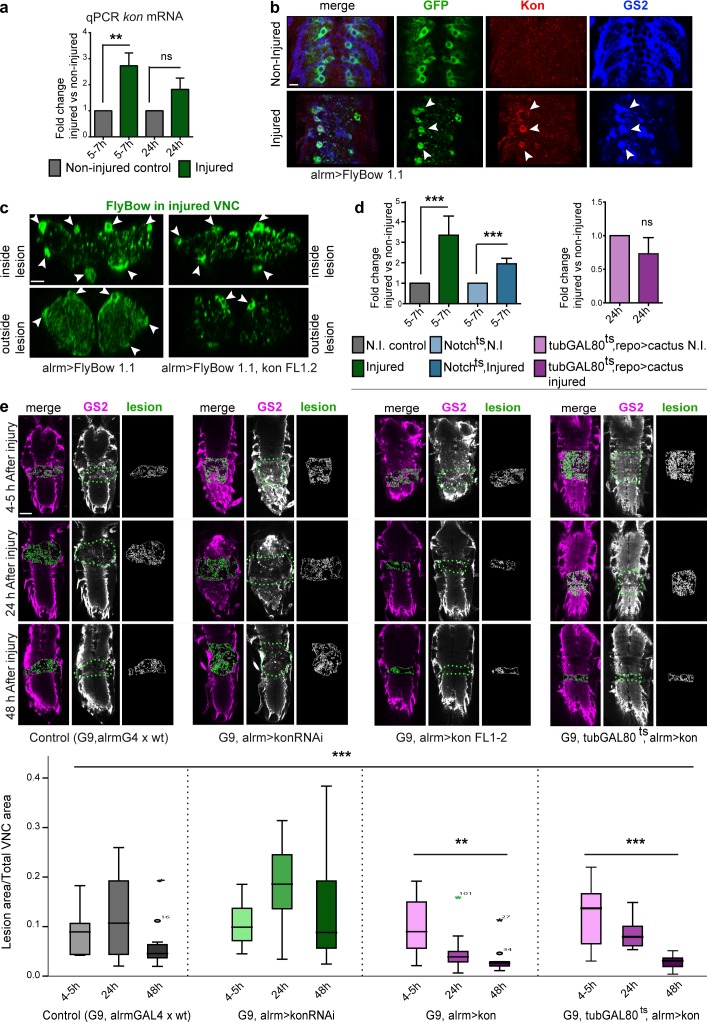Figure 7.
Kon is required in glia for CNS repair. All injured samples except in panels b and c have the G9 GFP reporter in their genotype. (a) Genotype: G9/+. qRT-PCR of larval dissected CNSs: crush injury caused the up-regulation of kon transcript levels at 5–7 h after injury, followed by a homeostatic decrease by 24 h. One-way ANOVA: *, P < 0.01; post hoc Sidak paired tests injured vs. noninjured: **, P < 0.01. ns, not significant. (b) Crush injury up-regulated Kon in alrmGAL4>mCD8GFP GS2+ NG (arrowheads). (c) Crush injury induced a change in cell shape, as the glial alrmGAL4>FlyBow1.1 fine projections became thicker within the lesion. Overexpression of kon with alrmGAL4 had the same effect. Arrowheads indicate NG nuclei and soma as landmarks. (d) qRT-PCR showing kon mRNA levels: upon injury, kon expression does not increase as much in Notchts; G9 mutants as in controls. N.I., not injured. One-way ANOVA: ***, P < 0.0001; post hoc Holm–Sidak, injured control vs. noninjured control: ***, P < 0.0001; Notchts; G9 injured vs. Notchts; G9 noninjured control: ***, P < 0.001. kon expression fails to increase upon injury in larvae overexpressing cactus in glia (G9; tubulinGAL80ts, repoGAL4>UAScactus), Student’s t test: P = 0.089. (e) Crush injury in control larvae caused lesion expansion followed by shrinkage. kon knockdown in alrmGAL4 NG prevented wound shrinkage; kon overexpression in alrmGAL4 NG prevented lesion expansion and enhanced lesion repair compared with controls; temporal restriction of kon overexpression to after injury (shifted to 30°C immediately after injury) still prevented wound expansion and promoted repair. Asterisks over dataset denote Kruskal–Wallis, ***, P < 0.001; in UASkonFL, multiple comparison Bonferroni correction, **, P < 0.01; *, P < 0.05. (a and d) Sample types are dissected CNS, n = 20 CNS per genotype per replicate, three replicates per genotype. (e) Sample types are larval VNCs, n = 8–20. For further details, see Table S1; >, GAL4/UAS. Bars: (b and c) 10 µm; (e) 50 µm.

